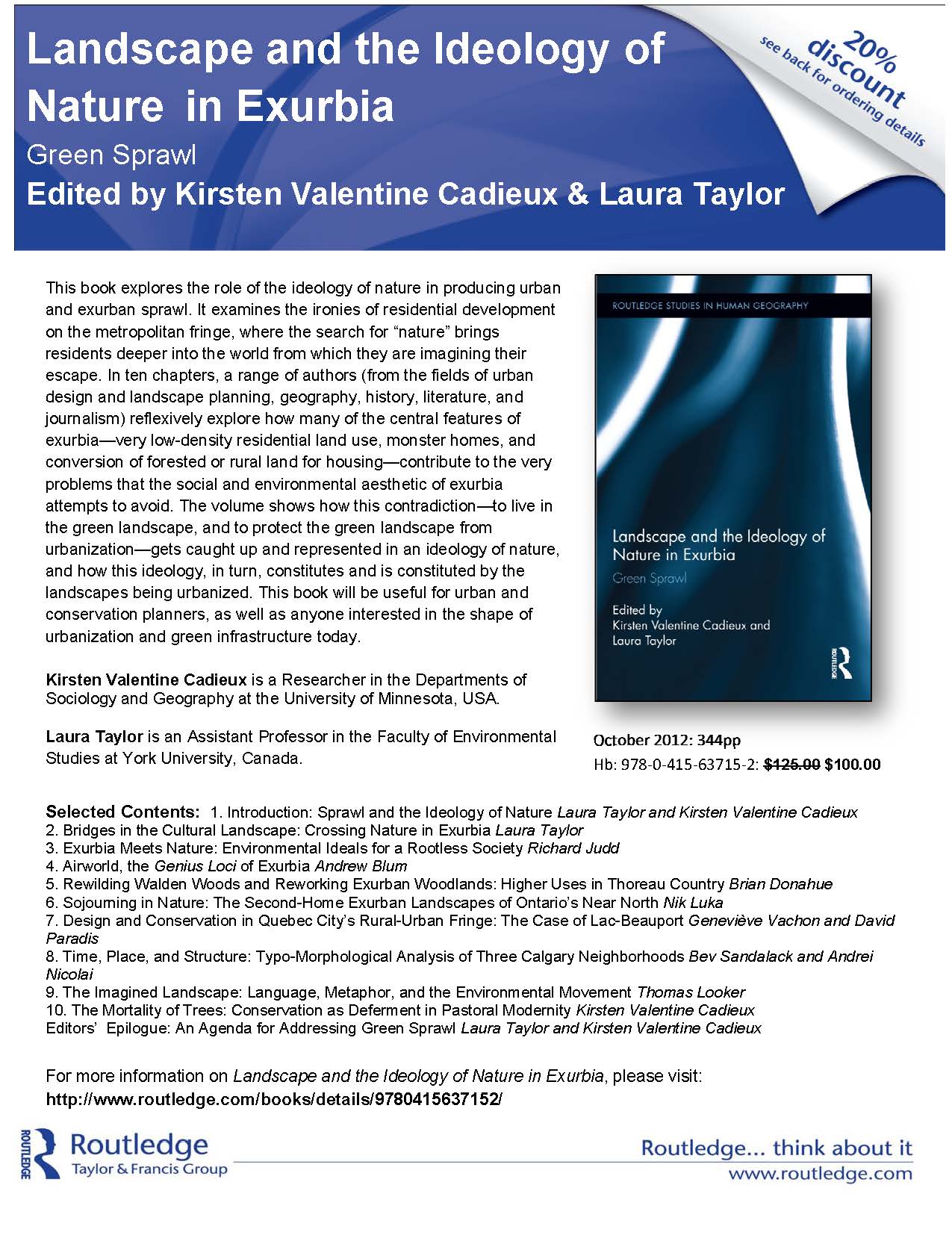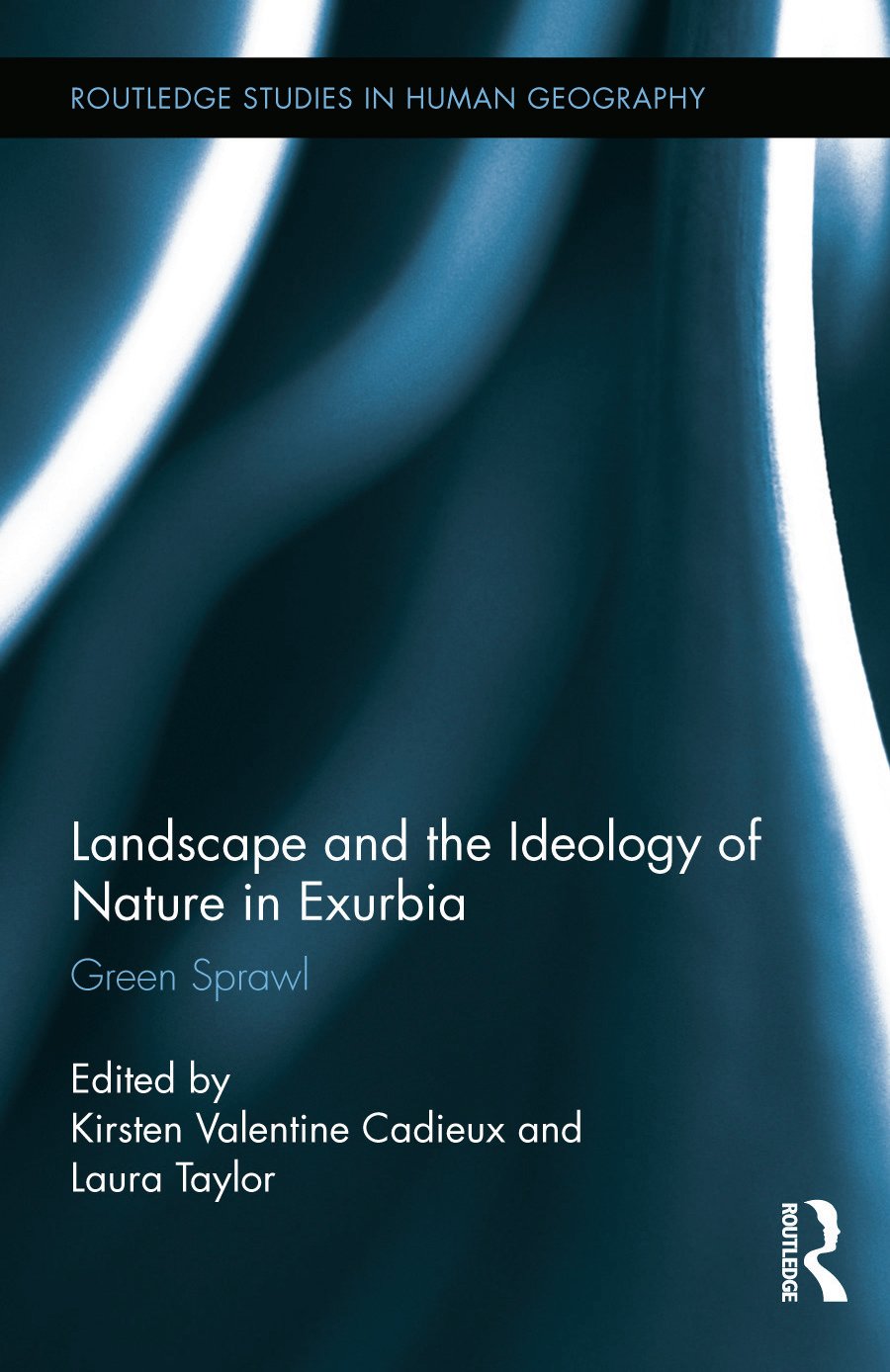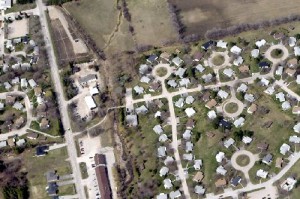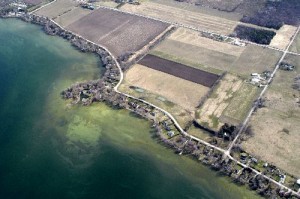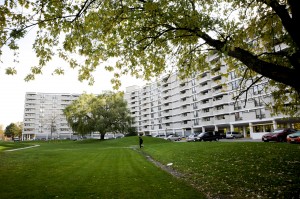Landscape and the Ideology of Nature:
Green Sprawl
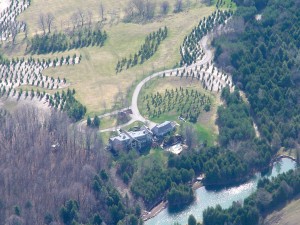
An exurban landscape northeast of Toronto
edited by Kirsten Valentine Cadieux and Laura Taylor
Routledge, release date November 15, 2012
“Green sprawl” is our label for exurban residential development. In the book, we explore how important the ideology of nature is (and has been) in producing sprawl; where the ideology of nature is a recognized, yet understudied aspect of understanding the culture and production of cities. Although the idea that many people make their residential choices based on proximity to natural areas, a critical exploration of why this is the case has not been made. Unmasking the cultural preference for a home life in nature seems to us a necessary step in addressing the contemporary crisis of sprawl.
The book emerged out of a series of symposia beginning in 2002 on the landscapes and ideology of exurbia held at various meetings of the Association of American Geographers, the American Society for Environmental History, and the Canadian Association of Geographers. From 20 papers presented in fields from urban and landscape planning through geography and history to literature and journalism, we selected 10 (see below) that focus on the way that desire for relationship with nature shapes important features of the landscape of contemporary urban sprawl. Our essays explore the potentials and liabilities of the exurban construction of nature in the context of urban sprawl. We offer perspectives that, instead of merely noting or condemning sprawl, try to figure out how exurban ideologies of nature can be interpreted as cultural frameworks representing and organizing aspirations to reconcile environmental ideals with the impacts that follow from dispersed urbanization.
Our purpose in collecting these essays is to capture the convergence of insights on the processes of urban dispersion afforded by the multidisciplinary discussion of our symposia. Academics from several disciplines discussed the landscapes and processes of exurbia as representing many social and environmental problems of sprawl, particularly in terms of the convergence point: what we have come to talk about as “the ideology of nature.” Conversation between the very different perspectives represented in our collection allows several entry points for understanding the experience and implications of sprawl—a complex land use phenomenon that many people simultaneously want and want to prevent. Both of these aspirations—to live in the green landscape, and to protect the green landscape from urbanization—get caught up and represented in the ideology of nature, and this ideology, in turn, constitutes and is constituted by the landscapes being urbanized.
The search for “nature” in which so many exurbanites seem to be involved is fraught with ironies that seem almost inherent in the form and symbols of exurbia. In fact, the lifestyle of the metropolitan fringe often brings residents deeper into the world from which they are imagining their escape—of Federal Express, technologically mediated communications, global supply chains, and the anonymity of the global marketplace. Many of the central features of exurbia—very low density residential land use, monster homes, and conversion of forested or rural land for housing—contribute to the very problems that the social and environmental aesthetic of exurbia attempts to avoid.
What is accomplished by highlighting the ironies and tensions of green sprawl? By understanding the processes and ironies of exurbia, greater insight is gained into where and how and why people create meaning in exurban landscapes, and how this meaning, in turn, gets incorporated in efforts to minimize the negative ecological, social and economic effects related to metropolitan fringe urban development. This collection is timely and broadly relevant: exurban fringe development was the fastest growing land use during the recent North American housing boom, with many implications of the speed and process of urbanization remaining currently unresolved. Further, exurban “ideology of nature” qualities of urbanization are quickly becoming sought after in residential landscapes in many different national contexts.
Contents and Contributors:
1. Introduction: Sprawl and the Ideology of Nature Laura Taylor, York University and Kirsten Valentine Cadieux, University of Minnesota
2. Bridges in the Cultural Landscape: Crossing Nature in Exurbia Laura Taylor
3. Exurbia Meets Nature: Environmental Ideals for a Rootless Society Richard Judd, Professor, University of Maine
4. Airworld, the Genius Loci of Exurbia Andrew Blum, Journalist
5. Rewilding Walden Woods and Reworking Exurban Woodlands: Higher Uses in Thoreau Country Brian Donahue, Associate Professor of American Environmental Studies, Brandeis University and Environmental Historian at Harvard Forest
6. Sojourning in Nature: The Second-Home Exurban Landscapes of Ontario’s Near North Nik Luka, Associate Professor, Schools of Architecture and Urban Planning, McGill University
7. Design and Conservation in Quebec City’s Rural-Urban Fringe: The Case of Lac-BeauportGeneviève Vachon, architect and Professor of Urban Design, Université Laval and David Paradis, planner and instructor, Université Laval
8. Time, Place, and Structure: Typo-Morphological Analysis of Three Calgary Neighborhoods Bev Sandalack, Professor, Faculty of Environmental Design, University of Calgary and Andrei Nicolai, Adjunct Professor, Faculty of Environmental Design, University of Calgary
9. The Imagined Landscape: Language, Metaphor, and the Environmental Movement Thomas Looker, Visiting Lecturer and Visiting Scholar (Retired), American Studies, Amherst
10. The Mortality of Trees: Conservation as Deferment in Pastoral Modernity Kirsten Valentine Cadieux
Editors’ Epilogue: An Agenda for Addressing Green Sprawl Laura Taylor and Kirsten Valentine Cadieux
